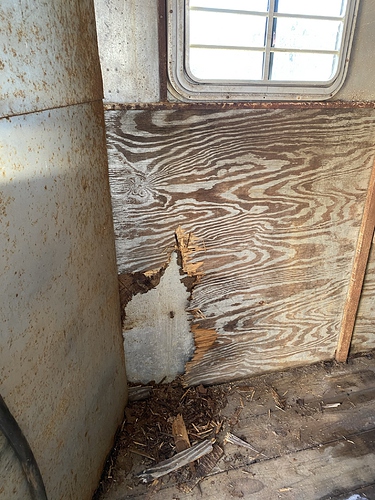Since everyone was so helpful with the stall repair, here is another one:
Barn friend has an old trailer that needs work to sell it. At some point a hole was kicked in the plywood on the wall at the bottom. We looked at it and figured that if we could somehow cut out a square and cut a piece of plywood the same size as the hole, it could be fastened with to the outside wall with bolts (same way the current wood is fastened).
What could we use to cut out an even sized hole (instead of the jagged hole) without having to remove the entire piece of plywood.
Bonus points if we can manage without loss of fingers.


